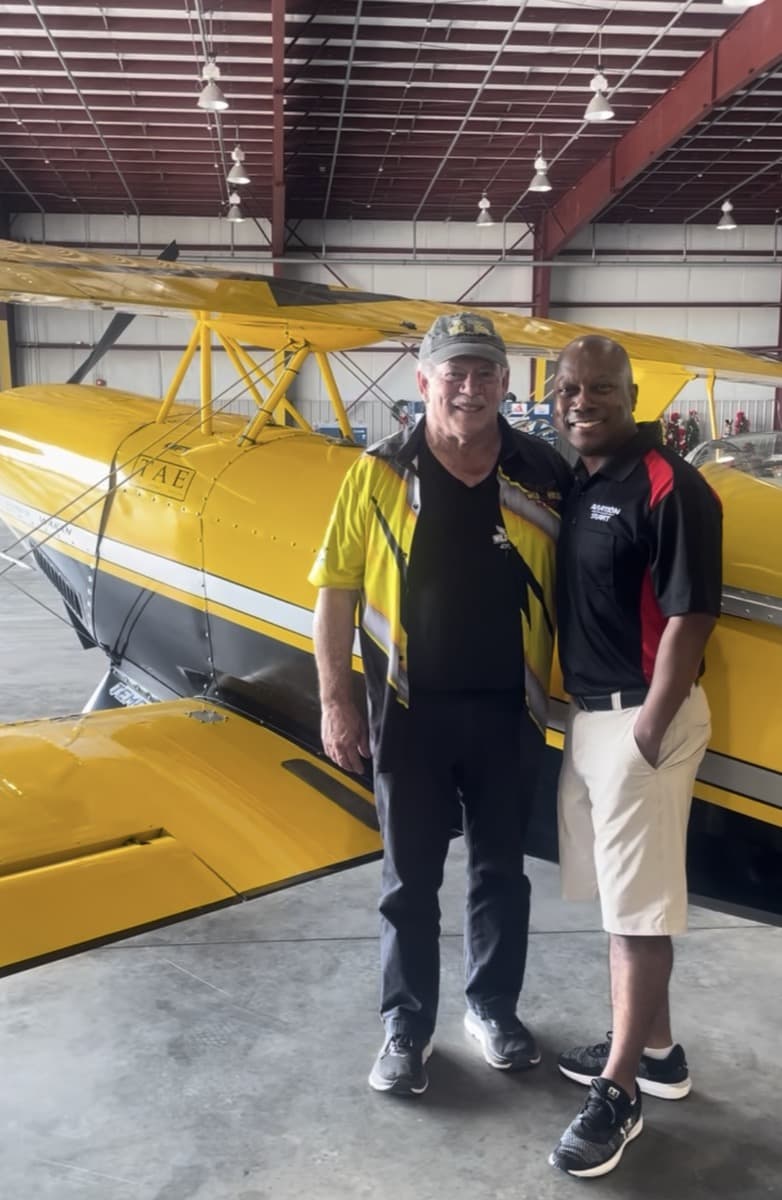This is the third installment in a series of stories about why 80% of the people who start quit flight training. Part One covered the #1 reason: Money. Part Two delved into health concerns.
By JAMAIL LARKINS
Would you choose to spend more than 50 hours in a 40-inch enclosed space with someone you don’t mesh with while they quiz you continuously on a complex subject that you are just learning?
I also forgot to mention you get the privilege of paying them around $5 a minute for the experience.
Given that is the width of a Cessna 172’s cabin, we are asking a lot of prospective pilots to do just that.
Unfortunately, a large portion of student pilots will quit flight training versus finding a new instructor if their teaching and learning personalities don’t mesh.
This is the reason why a negative overall flight training experience was ranked as the third biggest reason why 80% of all student pilots quit before they obtain their private pilot’s certificate according to my informal social media poll.
This reason actually makes a lot of sense to me.
Learning how to fly is an extremely complicated, stressful, and overwhelming experience. Couple that scenario with a negative experience, and it’s easy to understand why many people quit.
I was very fortunate that I loved every single instructor I have had in the cockpit.
From Bruce Gunter who signed me off for my US solo in a Cirrus SR20, to Buck Roetman who trained me for my Aerobatic Competency Evaluation (required to fly air shows in the US), they were all patient, extremely knowledgeable, and had the ability to impart the skills needed to obtain whichever certificate or rating I was seeking. It also didn’t hurt that our personalities matched.
I’m a self-proclaimed aviation nerd, so even if I didn’t enjoy my instructors, I still would have continued with my flight training. But, everyone isn’t that passionate and aviation obsessed. As such, the aviation community risks losing potential pilots by having too much bravado.
One message that I would like to stress to any prospective pilot — or current pilot seeking an additional rating — is if you are not enjoying your flight training experience, it is 100% OK to switch certified flight instructors (CFI) or even entire flight schools. You’re paying for the experience, so you might as well enjoy the experience!
John and Martha King of King Schools have helped trained 52% of all pilots in the United States. King Schools just celebrated 50 years of teaching pilots required knowledge to pass their ground school courses, and have a 99.8% pass rate. This leads me to believe they know the pilot training business.
Not long ago, I had the chance to ask the Kings about their recommendations to prospective pilots on how to be successful in their flight training.
Having a passion for what you are learning was a big theme, but they specifically said: “Keep it fun. You’re going to learn faster.”
To flight instructors, the Kings had this to say: “Your students will retain what you are saying if you use humor. The human brain has a better way of implanting knowledge with humor.”
The veteran instructors understand the subject matter of learning how to fly is dense, but the Kings try their best to “simplify, clarify, and make it fun.”
This approach to flight instruction is something more instructors should try to incorporate into their own flight instruction.
As in any industry — as in most aspects of life — there’s going to be a few bad actors. Fortunately, most flight schools and flight instructors have a passion for aviation and typically want to help their students become better pilots. However, if you do find one of the bad apples, switch sooner than later.
The positive news is that there are a lot of flight instructors available. At last check, there were 122,577 in the United States, so you have options.
I would love to hear from more pilots on their flight training journeys, so if you are willing to share, please let me know. You can search Jamail Larkins on Instagram, Facebook, and YouTube. Or feel free to share your feedback at JamailLarkinsAviation.com.
To read the first part of this series, click here. To read the second part, click here.





